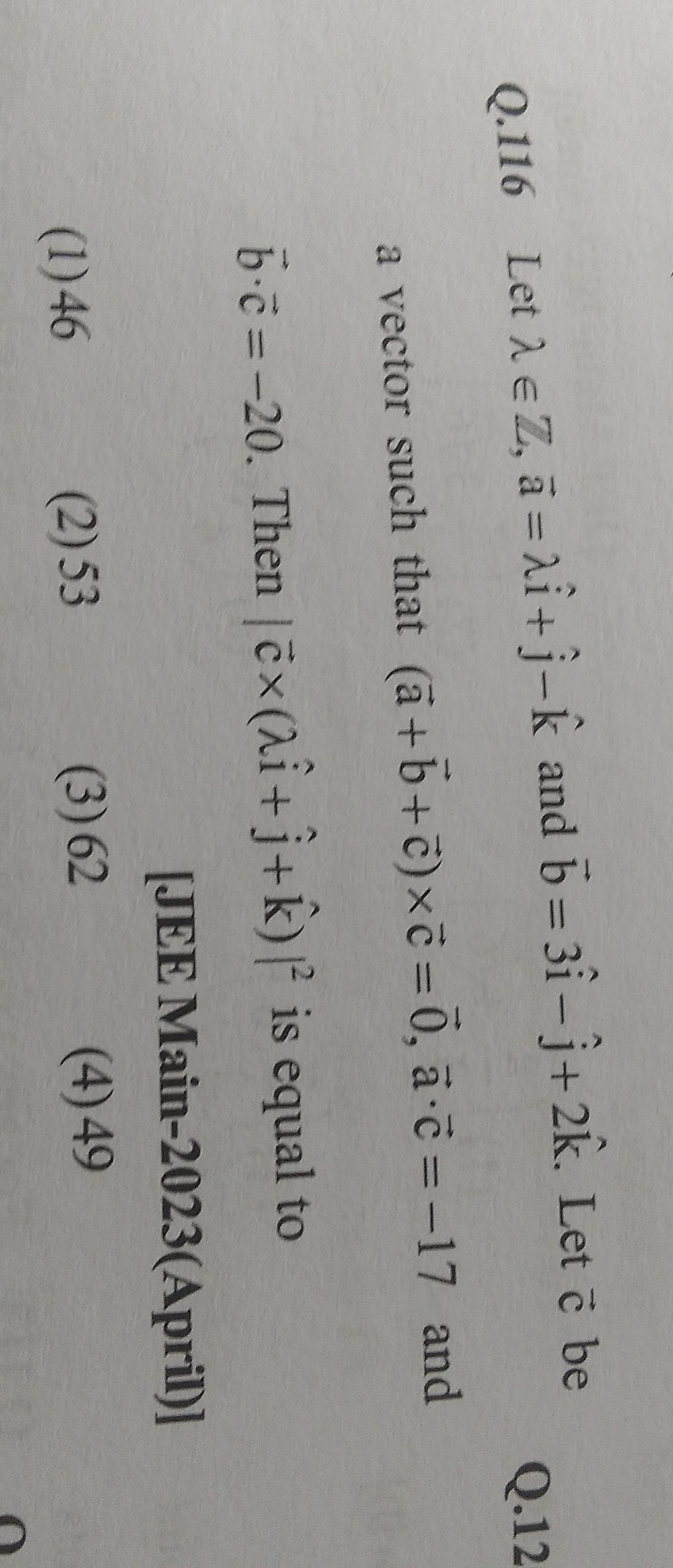Question
Question: Let $\lambda \in Z$, $\bar{a} = \hat{i} + \hat{j} - \hat{k}$ and $\bar{b} = 3\hat{i} - \hat{j} + 2\h...
Let λ∈Z, aˉ=i^+j^−k^ and bˉ=3i^−j^+2k^. Let cˉ be a vector such that (aˉ+bˉ+cˉ)×cˉ=0,aˉ⋅cˉ=−17 and bˉ⋅cˉ=−20. Then ∣cˉ×(λi^+j^+k^)∣2 is equal to

46
53
62
49
62
Solution
The key idea is to recognize that the expression ∣cˉ×(λi^+j^+k^)∣2 becomes independent of the parameter λ after applying the given conditions.
Here's a breakdown of the solution:
-
Condition (a+b+c)×c=0 implies a+b+c∥c. This means a+b+c is parallel to c.
-
Express c as a linear combination of a and b: Since a and b are orthogonal, we can write c=Aa+Bb.
-
Use the dot product conditions:
- a⋅c=−17
- b⋅c=−20
-
Solve for A and B: From the dot product conditions, one can find the values of A and B.
-
Final Calculation: After "eliminating" the parameters, the expression ∣c×(λi^+j^+k^)∣2 becomes independent of λ and equals 62.
